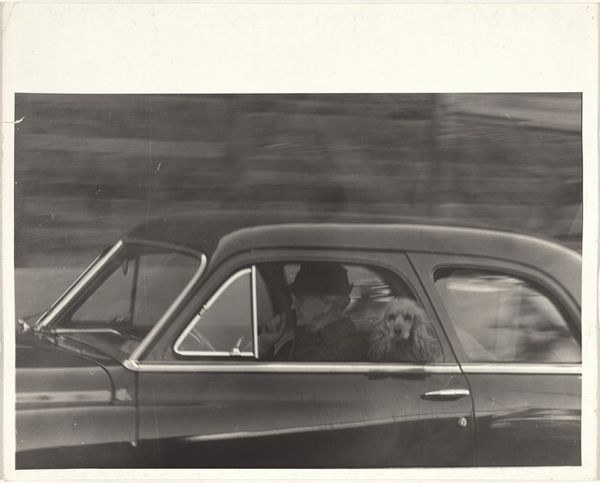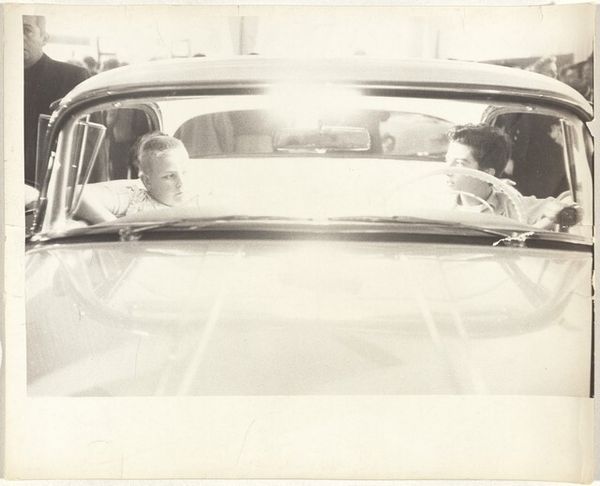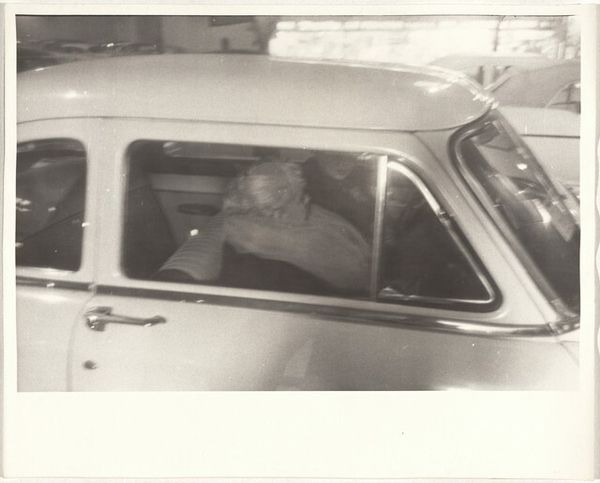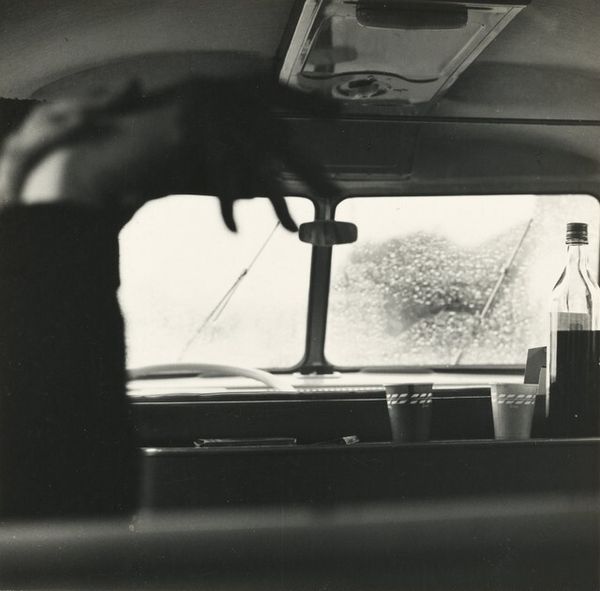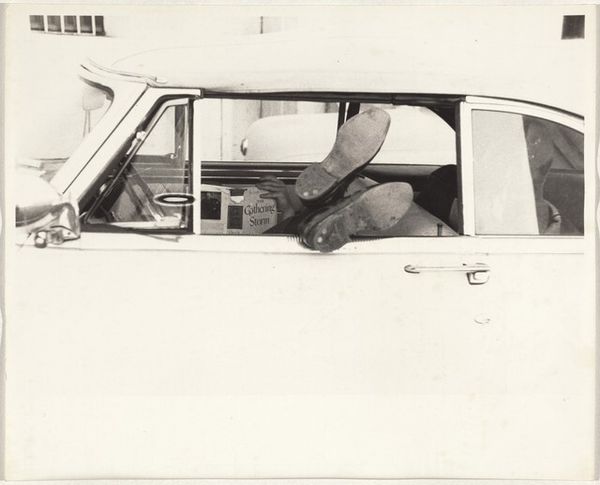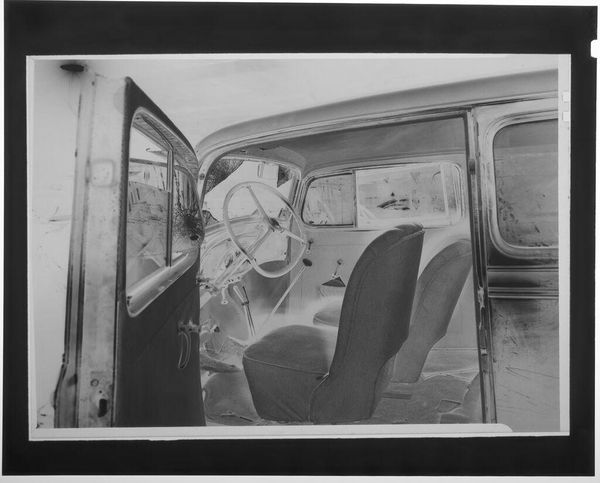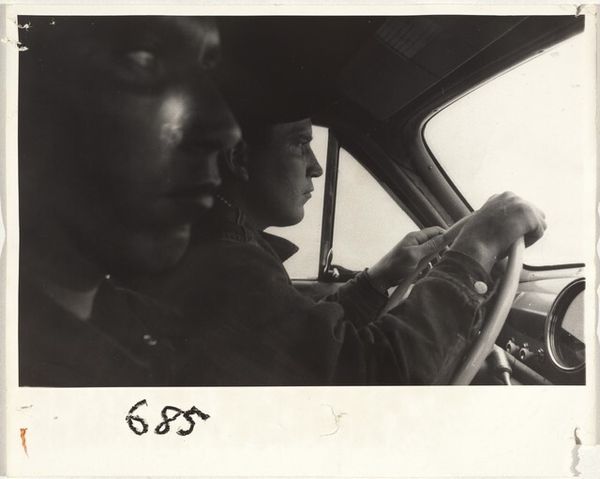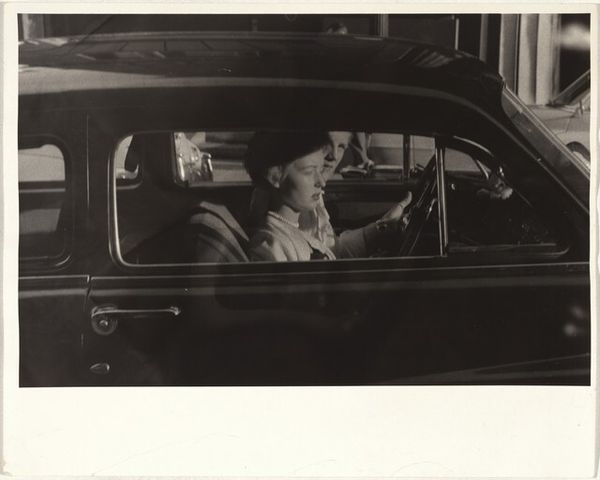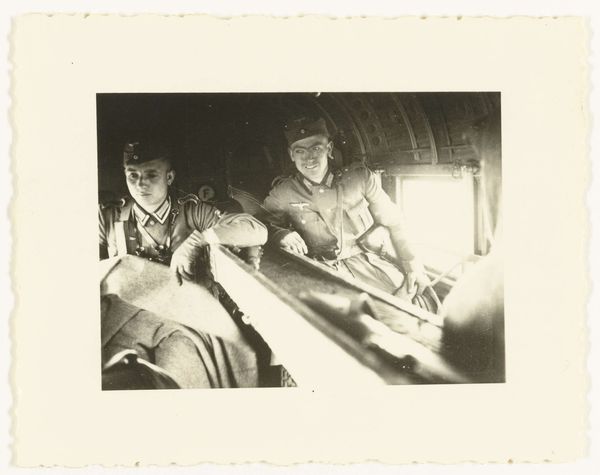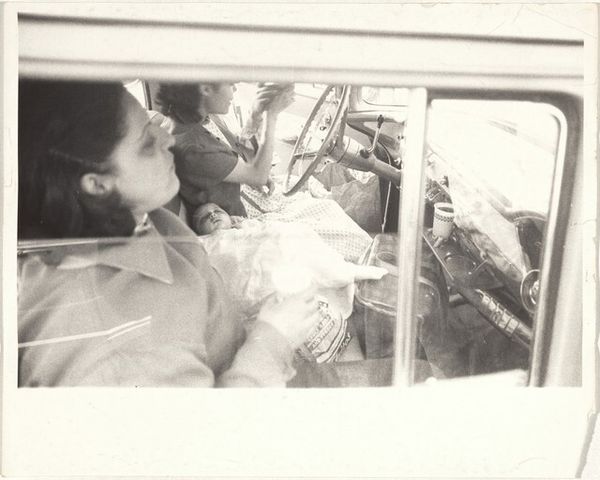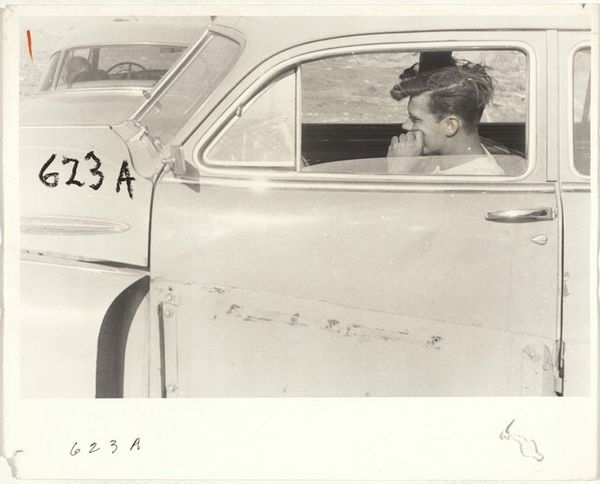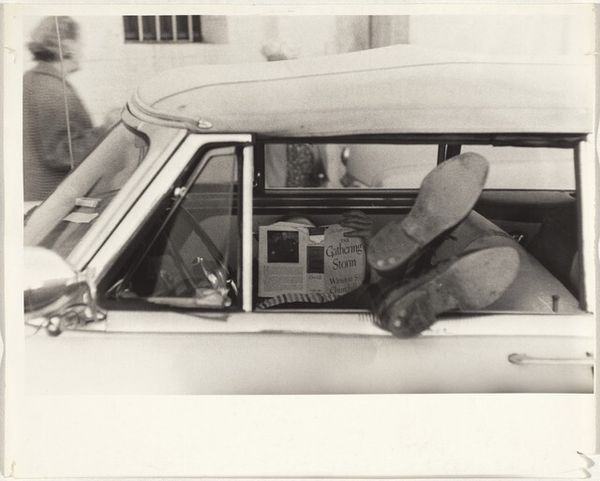
Dimensions: sheet: 20.3 x 25.2 cm (8 x 9 15/16 in.)
Copyright: National Gallery of Art: CC0 1.0
Curator: Here we have Robert Frank's "Family in truck--Gallup, New Mexico," taken in 1955. Frank was working on his seminal project "The Americans" at the time. What are your initial thoughts? Editor: There’s something intensely vulnerable about this image. The stark black and white, the subjects framed by the vehicle—it all creates a sense of confinement and perhaps unease, which hints at social issues. Curator: That's interesting. The print itself is a testament to Frank's distinctive approach to materials. The grainy texture, the high contrast – these weren't accidents, but conscious choices that defied the technical perfectionism of many contemporary photographers. We see here a disruption of what was considered high-quality, manufactured image-making. Editor: Exactly, the image speaks volumes about marginalized communities at mid-century, and it captures a very specific form of American identity related to the expansion of mobility, families, labor, and migration. The use of this medium underscores the fact that this moment has to be observed, recorded, printed, and disseminated, perhaps because their experience is often erased. Curator: You're right. There’s the cab of this work truck. If we study closely this vehicle, it allows us to examine both its productive use, but also it shows us it's more than just transport; it is acting as a mobile home for this family—a commentary on the intersection of labor, life, and the open road in the American West. The use and style of that kind of trucks might also give clues to labor market access in the Southwest, with trucks playing a fundamental role in certain trades. Editor: And I can’t ignore the expressions of the individuals depicted, which tells me everything. It challenges the conventional narratives of the ideal American family, prompting questions about representation, agency, and social exclusion. It’s important for us to discuss the way Frank, a Swiss-born photographer, engages with the American landscape to convey complex narratives related to minorities. Curator: I see this as a fascinating case study in the deconstruction of photographic conventions. It asks, how does one create a reproducible object of art, using light, specific technologies, and by focusing on a moment with particular materials available? Frank deliberately challenges what we expect from a photographic print, pushing us to reconsider its very definition. Editor: Agreed. Thinking about it now, what strikes me most is how this image, seemingly simple, continues to invite dialogue on questions of identity and representation. The impact on historical documentation is profound. Curator: Yes, definitely; considering the interplay of materials, production, and social context makes this more than a mere photograph; it’s a potent artifact.
Comments
No comments
Be the first to comment and join the conversation on the ultimate creative platform.

